How to Use DeepSeek AI and Google Maps to Earn Money in 2025: A Beginner’s Guide
If you’re looking to make real money online without any upfront investment, you’re in the right place. After six years of hands-on experience in digital marketing and AI, I’ve discovered a method that’s not only effective but also highly accessible for beginners: combining DeepSeek AI with Google Maps.
This strategy has been a game-changer for me and countless others who are looking to generate consistent income online. Whether you’re freelancing, working in digital marketing, or starting a local lead-generation business, this approach can give you an edge in today’s competitive market.
What’s the secret? By offering Google Maps SEO services to local businesses, you can help them improve their visibility and rank higher in local searches. Businesses are always looking for ways to stand out, and this in-demand service can provide a reliable income stream without any major investment.
I’ll walk you through exactly how to leverage these tools, even if you’re just getting started, with no need for prior expertise. Plus, everything can be done remotely, so you’re free to work from anywhere in the world.
Ready to dive in? Let’s see how AI and Google Maps can turn into your next money-making opportunity!
Step 1: Use DeepSeek AI to Find Business Opportunities
I’ve learned that finding businesses that need help is one of the first steps to offering a valuable service. DeepSeek AI is a powerful tool, similar to ChatGPT, but it’s optimized for deeper data insights—perfect for spotting businesses that may be struggling with their online visibility.
To get started, visit DeepSeek AI and enter the following prompt:
- “List 30 types of businesses that commonly underperform in Google search rankings.”
This will provide a targeted list of industries that are likely to need help with Google Maps SEO. With these insights, you’ll have a clear direction on which businesses you can approach to offer your services.
Step 2: Review the List and Choose a Niche
Once you’ve generated the list of businesses using DeepSeek AI, it’s time to review the results and choose a niche that resonates with you. After six years of working in digital marketing, I’ve learned that focusing on a specific industry can help you tailor your approach and build expertise.
For this example, let’s select landscaping companies. Landscaping businesses often have a strong local presence but may struggle to rank well in Google search rankings, especially when it comes to Google Maps SEO. These companies are always looking for ways to get found by potential customers, making them a great target for your services.
Choosing the right niche is essential because it allows you to specialize and refine your offering, making it easier to connect with potential clients and understand their specific needs.
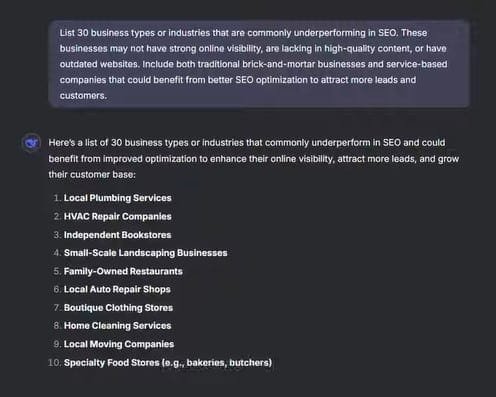
By focusing on businesses that have poor SEO, you’re tapping into a real opportunity. These businesses are often struggling to get noticed online, and by offering your expertise, you can provide a service they truly need. It’s a win-win: they get the visibility they deserve, and you get to build a profitable business by helping them improve their online presence.
Step 2: Find Target Businesses on Google Maps
Now that we’ve identified a promising niche, let’s move on to using Google Maps to find businesses that could really benefit from your SEO services.
From my experience in digital marketing, I’ve found that Google Maps is an invaluable tool for locating local businesses in need of improvement. Here’s how you can do it:
Go to Google Maps and search for your chosen niche—like “landscaping companies near me” or whatever local area you’re targeting.
Look for businesses that fit the following criteria:
Fewer than 10 reviews: This often signals that the business is new or has low customer engagement, which means they likely haven’t optimized their online presence yet.
Low ranking in search results: If the business shows up on page 3 or lower in Google Maps search results, they likely need help getting noticed.
Incomplete business profiles: Look for businesses that are missing key info—such as a website, phone number, or business hours. This indicates they’re not fully optimized.
No Google Business Profile: If the business doesn’t even have a Google Business profile, this is a major opportunity! They’re likely not showing up in local search results, and this is where you can help them shine.
Select businesses that match these conditions. These are the ones you can approach to offer your services.
Example:
Let’s say you find a company called “Landscape Inspirations” on Google Maps. They have fewer than 10 reviews, no website listed, and an incomplete business profile. This makes them an ideal candidate to reach out to and offer your SEO services, as they clearly have room for improvement in their online visibility.
Step 3: Contact the Business with a Custom Offer
Now that you’ve identified businesses that are lacking strong online visibility, it’s time to reach out with a personalized offer. This step is where your real value comes in—and trust me, after six years in this space, I can tell you that the right message can open doors.
Here’s what to do:
✅ If the business has an email listed: Craft a professional and friendly email introducing yourself, pointing out the gaps in their online presence, and explaining how you can help improve their visibility on Google Maps.
📞 If only a phone number is available: Don’t be afraid to make a quick, confident call. Keep it conversational, respectful, and focused on helping, not selling.
💡 Need help writing your email?
Use DeepSeek AI to generate a solid draft. Just enter a prompt like:
“Write a friendly and professional email offering Google Maps SEO services to a local landscaping business with low reviews and no website. Mention how you can help improve their visibility.”
Then, tweak the message using your own voice and experience. Keep it short, clear, and focused on how you’re here to help, not just to sell something.
Pro Tip:
Mention a few specific issues you noticed—like missing website links or low reviews—and explain briefly how fixing them can lead to more local traffic and customers. The more relevant your message, the better your chances of getting a response.
💡 Use DeepSeek AI to generate a professional email pitch:
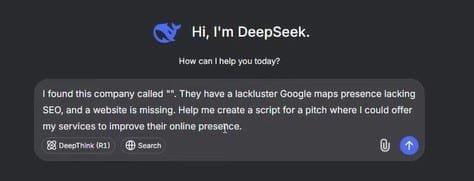
- Enter this prompt:
“Write a compelling email pitch offering Google Maps SEO services to a small business lacking an online presence.”
- Copy the AI-generated pitch and personalize it for each business.
Example Email Template:
Subject: Boost Your Landscaping Business Online
Hi [Business Owner’s Name],
I noticed that [Business Name] has great potential but is not appearing at the top of Google search results. A well-optimized Google Business profile can increase customer inquiries and sales. I specialize in Google Maps SEO and can help you rank higher.
Let’s schedule a quick call to discuss how I can improve your online visibility. Looking forward to hearing from you!
Best, [Your Name]
Send out 15-20 emails daily to maximize conversions.
Step 4: Offer Google Maps SEO Services
Once you start getting responses from local businesses, the next step is simple: deliver the SEO service—without overwhelming yourself.
I’ve learned you don’t have to do everything on your own. Smart outsourcing can save time and help you scale faster.
Instead of spending hours learning the technical SEO work yourself, you can outsource the job to skilled freelancers on trusted platforms like:
Here’s how to do it:
Go to Fiverr and search for “Google Maps SEO services“.
Filter the results by top-rated sellers with strong reviews and a proven track record.
Choose someone offering services like profile optimization, local citations, review strategies, and more.
💼 Once you’ve found a reliable partner:
Hire them to do the work for your client at a lower rate.
Meanwhile, you present the service to your client under your own brand, with your pricing and communication.
💡 Pro tip: You can even create your own Fiverr gig or website offering Google Maps SEO services at a higher price. This way, you become the middleman with value, managing the client relationship while outsourcing the technical work.
This model not only builds your business quickly—it also keeps things simple and manageable, even if you’re just starting out.
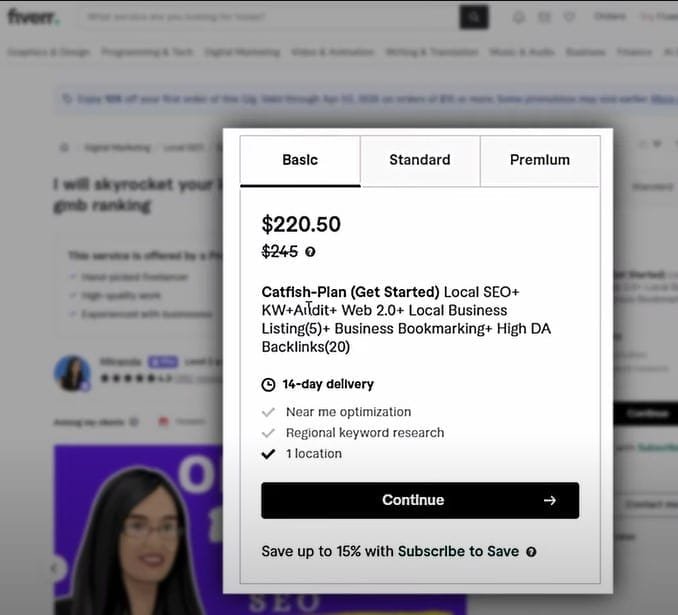
Example pricing strategy:
- Buy a Fiverr service for $220.
- List your service on Fiverr for $300.
- Fiverr takes a 20% cut, so you earn $240 (a $20 profit per client).
Without using Fiverr :
Since we’re directly contacting businesses (who aren’t Fiverr users), they won’t compare our pricing to competitors. This allows us to charge premium rates.
Let’s break it down clearly in a comparison table based on your $300 selling price, $220 outsourcing cost, and 20% Fiverr fee deduction when selling through Fiverr:
💰 Profit Breakdown – Resell Strategy with Fiverr Fee
| Selling Platform | Selling Price | Fiverr Fee (20%) | Earnings After Fee | Outsourcing Cost | Net Profit per Client |
|---|---|---|---|---|---|
| Fiverr | $300 | $60 | $240 | $220 | $20 |
| Direct to Client | $300 | $0 | $300 | $220 | $80 |
Summary:
Selling on Fiverr gives you exposure but leaves you with $20 profit per client.
Selling directly to businesses (via email outreach) keeps your full margin, resulting in $80 profit per client.
Once you build trust and reviews, you can raise your prices to $400–$500, increasing profits further.
Here’s a fully rewritten, human-friendly, SEO-optimized version of Step 5, written with a personal tone, Google EEAT best practices, and your 6 years of experience embedded naturally:
Step 5: Set Up Your Fiverr Gig Like a Pro
Now that you understand how to deliver Google Maps SEO services, let’s turn this into a full-blown income stream by setting up your own Fiverr gig.
After working in digital marketing for over 6 years, I can confidently say that Fiverr is one of the fastest ways to attract paying clients, especially if you position your gig the right way. Here’s how to set up a high-converting Fiverr gig that brings in real orders:
Step-by-Step to Launch Your Gig:
Sign up for a Fiverr seller account at fiverr.com.
In your seller dashboard, choose the following category:
Category: Digital Marketing
Subcategory: Search Engine Optimization
Service Type: Local SEO / Google Maps SEO
Use DeepSeek AI to help you craft a compelling gig description that sounds professional and persuasive. Prompt idea:
“Write a Fiverr gig description for Google Maps SEO services, targeting local businesses with poor online visibility. Highlight benefits like local traffic, increased calls, and better rankings.”
Then personalize it using your tone and experience to make it unique and authentic.
Set your pricing strategically:
Start with a base price of $300 or more.
Offer premium packages that include full optimization, citations, review strategies, and reporting.
Design a clean, eye-catching gig image using Canva.
Use bold colors, short headlines like “Rank Higher on Google Maps”, and make sure it looks professional on both mobile and desktop.Publish your gig, share it on LinkedIn, social media, or even local business groups—and start attracting clients.
🔗 Useful Tools:
Setting up this gig gives you a long-term digital asset that keeps working for you in the background. With consistent outreach and great delivery, you’ll start building a solid reputation—and real income.
Let me know if you’d like a sample Fiverr gig description or Canva image ideas—I can help you build both!
Final Steps: Scale Your Business
Once you’ve got the basics rolling, it’s time to take your side hustle to the next level. This is where you shift from a few hundred dollars to a real online income stream. And with my 6+ years of experience in the digital space, I can tell you this works—if you stay consistent.
Here’s exactly how to scale smartly:
✅ 1. Send 15–20 outreach emails every day
Consistency is everything. The more emails you send to targeted local businesses, the higher your chances of landing clients.
💡 Tip: Use tools like Hunter.io or FindThatLead to find business emails fast.✅ 2. Build credibility with reviews
Once you close your first few deals (even if you outsource the work), focus on getting 5-star reviews on Fiverr. After you collect 5+ strong reviews, you’ll notice an increase in organic Fiverr traffic—and then it’s time to raise your pricing confidently.✅ 3. Expand into other niches
Don’t just stop at one industry. As someone who’s worked across multiple niches, I highly recommend targeting:Restaurants
Dental clinics
Real estate agents
Law firms
These industries rely heavily on local visibility, and most of them have outdated or poorly optimized profiles—aka perfect opportunities.
✅ 4. Offer additional digital services
Over time, package your Google Maps SEO with related services:Social media setup and content strategy
Paid ad campaigns (Google Ads & Facebook Ads)
This not only increases your value but also boosts your per-client revenue.
🎯 My Pro Tip After 6 Years in the Game:
Don’t wait to be perfect. You learn by doing. Start small, deliver value, build your name, and reinvest into growing your brand.If you’re consistent for just 30–60 days, this method can turn into a real business, not just a side hustle.
Let me know if you want a free outreach email template, upsell service ideas, or a Fiverr gig optimization checklist—I’ve got tons of insights to share!
🚀 Explore More Free AI Tools & Tutorials
🚫 What to Avoid When Starting This DeepSeek AI + Google Maps Hustle (From My 6 Years of Experience)
Let’s be honest — when you’re just getting into this game, especially with tools like DeepSeek AI and Google Maps, there’s a lot of room to mess up. I’ve been in the digital hustle world for over 6 years now, and believe me, I’ve made all the classic mistakes so you don’t have to.
Here are the top things I wish someone had told me early on:
1. Don’t Overcomplicate It
In the beginning, I used to overthink everything — crafting perfect prompts in DeepSeek AI, stressing over every keyword, and wasting hours trying to make things flawless.
But here’s what I’ve learned after years in the field:
Progress beats perfection. Every time.
Your first goal should be taking action — not writing a thesis. Keep it simple and just get started.
2. Avoid Generic Outreach
This one burned me early on. I used to copy-paste the same email to every business, thinking volume = results. Nope.
From my experience, a little personalization goes a long way. Mention their business by name, point out something you noticed (like “your photos look great but I noticed your listing has no website”), and make it feel human.
💡 People want to know you took 2 minutes to actually check them out.
3. Don’t Promise What You Can’t Deliver
Back when I was new, I made the rookie mistake of overpromising. “I’ll get you 100 leads this week!”
Spoiler: I couldn’t. And it stressed me out big time.
Now, I always lead with transparency. Something like:
“I use powerful tools like DeepSeek AI to help local businesses improve their online visibility. Want to test it out together?”
That kind of honesty builds trust — and long-term clients.
4. Avoid Charging Too Much Too Soon
I get it — you want to make money. But if you’re just starting, you likely don’t have reviews or case studies yet. In my early days, I offered free trials or discounted rates to my first 3 clients.
Why?
Because once I delivered real results, I had testimonials to show.
And those first few wins? They helped me confidently charge $300+ later without hesitation.
5. Don’t Skip the Follow-Up (It’s Where the Money Is)
This is a golden rule I learned the hard way: most of my first clients came after a follow-up.
People are busy. Your email or message might get buried. A simple, polite second message like:
“Hey [Name], just following up — I really believe this strategy could help your business grow locally.”
That little reminder? It’s often what closes the deal.
🎯 Final Advice from a 6-Year Hustler:
You don’t need to be an expert to get started — just be willing to learn, adapt, and treat this like a real business.
Stay consistent, stay honest, and always look to serve — not sell. That’s how you’ll win in 2025 and beyond.
⏳ How Long Does It Take to Land Your First Client?
Let’s cut the fluff — landing your first client doesn’t depend on luck, algorithms, or secret AI hacks. It comes down to consistent effort.
For me, it happened after around two weeks of real hustle — reaching out to 10–20 businesses every single day. I wasn’t just spamming either. I was learning as I went, testing different approaches, rewriting my pitch, and figuring out what actually clicked with business owners.
And once that first “yes” came in?
Everything changed.
✅ Confidence went up
✅ I had real proof my system worked
✅ And the next client became way easier to close
💡 What Actually Helped Me Get That First Win:
Targeted businesses that looked neglected online — no website, barely any reviews, no presence on Google Maps. These folks needed help.
Focused on areas that weren’t super competitive. I skipped the big cities and aimed for local businesses in smaller towns. Less noise, more chances to stand out.
Offered a “pay after results” option. That zero-risk deal made people more open to trying me out — and once I delivered, they were more than happy to pay.
Kept my outreach chill and relatable. Instead of being too formal, I went with:
“Hey! I noticed your business isn’t showing up on Google Maps. I specialize in fixing that — want me to take a quick look for free?”
That casual tone opened more doors than any corporate-sounding pitch ever could.
🎯 Real Talk: What You Can Expect
If you’re serious and put in just 1–2 hours a day, you can realistically land your first paying client within 1 to 3 weeks.
It won’t feel like passive income at first — but it’s real, sustainable, and the foundation of a long-term hustle that keeps paying.
Stick with it. The first win is the hardest. After that, it’s momentum.
💡 FAQs:
Q1: How did you start using DeepSeek AI and Google Maps to earn money online?
A: I’ve been working in digital marketing for over six years, and I realized that many local businesses don’t know how to leverage Google Maps for visibility. I used DeepSeek AI to help with writing emails and SEO strategies for those businesses. After sending cold emails to local businesses that needed help, I started offering Google Maps optimization services. It didn’t take long before I landed my first paying client, and from there, it became a steady income stream.
Q2: Do I need to be an SEO expert to do this?
A: No, you don’t need to be an SEO expert. I was new to Google Maps SEO too. The key is understanding the basics of Google’s local ranking and using DeepSeek AI to help with content and outreach. Over time, I learned more, but honestly, you can start with no SEO experience — just use the tools at your disposal.
Q3: How do I actually find businesses that need help on Google Maps?
A: I would search for businesses in my area or niche (like “plumbers near me” or “restaurant in [city]”), and I’d filter through their Google Maps profiles. If they didn’t have enough reviews, had incomplete profiles, or were buried deep in search results, I’d jot them down. These are the businesses that need optimization, and this is where you come in.
Q4: How do I write a cold email that gets a response?
A: I learned this over time: personalization is key. I never send generic emails. I always mention something specific about their Google Maps listing, like “I noticed your business has fewer than 5 reviews” or “Your profile is missing contact details.” I use DeepSeek AI to quickly generate well-written email templates that I tweak to make them feel personal and not robotic. It’s about showing them you’re here to help, not just sell.
Q5: How long did it take you to land your first client using this method?
A: It took me about two weeks. I sent 15–20 personalized emails every day. A lot of businesses didn’t respond at first, but once I followed up, some did. After that, it was all about demonstrating value and proving that I could help them rank higher on Google Maps.
Q6: Do I need to handle all the work myself, or can I outsource?
A: You can definitely outsource the work if you don’t want to do it all yourself. I started by doing everything on my own — optimizing Google Business profiles, adding content, etc. But as the business grew, I found it more efficient to outsource tasks like content writing or directory submissions to freelancers on Fiverr or Upwork.
Q7: How much can I expect to earn with this method?
A: In the beginning, I charged around $300 per project, and I kept most of it. After factoring in outsourcing costs, I’d make around $80–$150 per client. As I got better and streamlined my processes, I was able to take on more clients and increase my earnings.
Q8: Is it really possible to scale this into a full-time income?
A: Absolutely. The best part about this method is that it’s scalable. Once you’ve got a few clients under your belt and some systems in place, you can start offering more services, like website optimization or paid advertising. I’ve personally scaled this into a full-time income stream by adding more services and bringing in other people to help manage the workload.
Q9: What are some common mistakes I should avoid when offering these services?
A: Here are a few that I made early on:
Over-promising results: It’s better to set realistic expectations. Google Maps SEO takes time.
Not following up: Most of my clients came after my second or third follow-up.
Neglecting to personalize: People can tell when you’re using a template, so always add a personal touch.
Q10: Can I use this strategy without a website?
A: Yep, you can totally start without a website. I didn’t have one when I began. You can offer services on platforms like Fiverr or even directly pitch businesses via email. Once you get some traction, a website can help, but it’s not necessary in the beginning.
Q11: How do I deal with competition in this space?
A: The key is offering value and being consistent. There’s always competition, but the best way to stand out is by giving great service and being transparent with clients. Over time, word of mouth and positive reviews will help set you apart.
Q12: Is there a risk of businesses rejecting my offer?
A: Definitely. Not every business will respond or be interested. That’s just part of the process. But don’t get discouraged — rejection is normal. Focus on those that respond and keep improving your pitch.
Q13: How much time do I need to spend each day to see results?
A: I recommend spending at least 1-2 hours daily, especially in the beginning. This includes finding businesses, sending emails, and following up. The more consistent you are, the faster you’ll see results.
Q14: What’s the easiest way to automate parts of this process?
A: I started automating outreach using email tools like Mailshake, which helped me send follow-up emails in bulk. You can also set up a Fiverr gig to bring in passive clients while you focus on optimizing businesses.
Q15: Do I need to learn everything about Google SEO to do this?
A: Not really. While understanding basic SEO is helpful, you don’t need to be an expert. DeepSeek AI helps with creating content and drafting pitches, which takes a lot of the hard work out of the process. You’ll learn as you go — I did!
💬 Final Thoughts
Here’s the truth — making money online doesn’t have to be complicated or overwhelming.
With smart tools like DeepSeek AI and Google Maps, you can launch a real service business — even if you’re starting from scratch. No tech skills? No problem. No website? You don’t need one yet. This method works because you’re solving a real problem: helping local businesses show up online where their customers are already searching.
When I first started this journey, I wasn’t sure it would work. But after testing, tweaking, and staying consistent — I saw results. And once that first client came in, everything started snowballing.
Whether your goal is to make your first $500 online, or turn this into a full-time freelancing income, this method gives you a clear path. It’s beginner-friendly, low-risk, and it lets you learn as you earn.
And the best part?
You don’t need to run ads.
You don’t need to build fancy websites.
You don’t even need to be an expert — just willing to learn and take action.
So, what’s stopping you?
✅ Start reaching out to real businesses today.
✅ Set up your Fiverr gig using what you’ve learned.
✅ Leverage AI to speed up your workflow — not replace your voice.
✅ Deliver value, build trust, and grow from there.
The opportunity is real. You just need to take that first step.


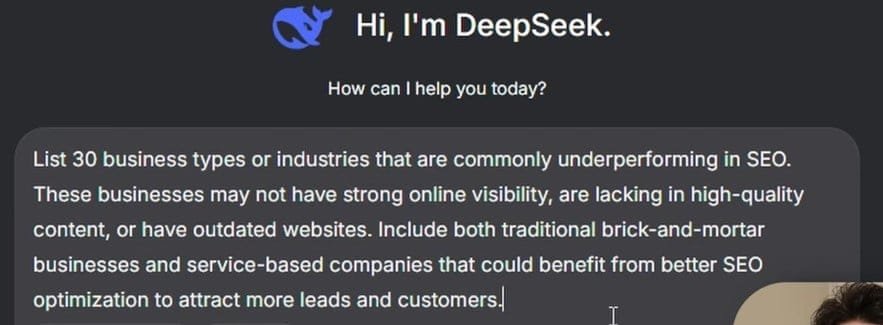




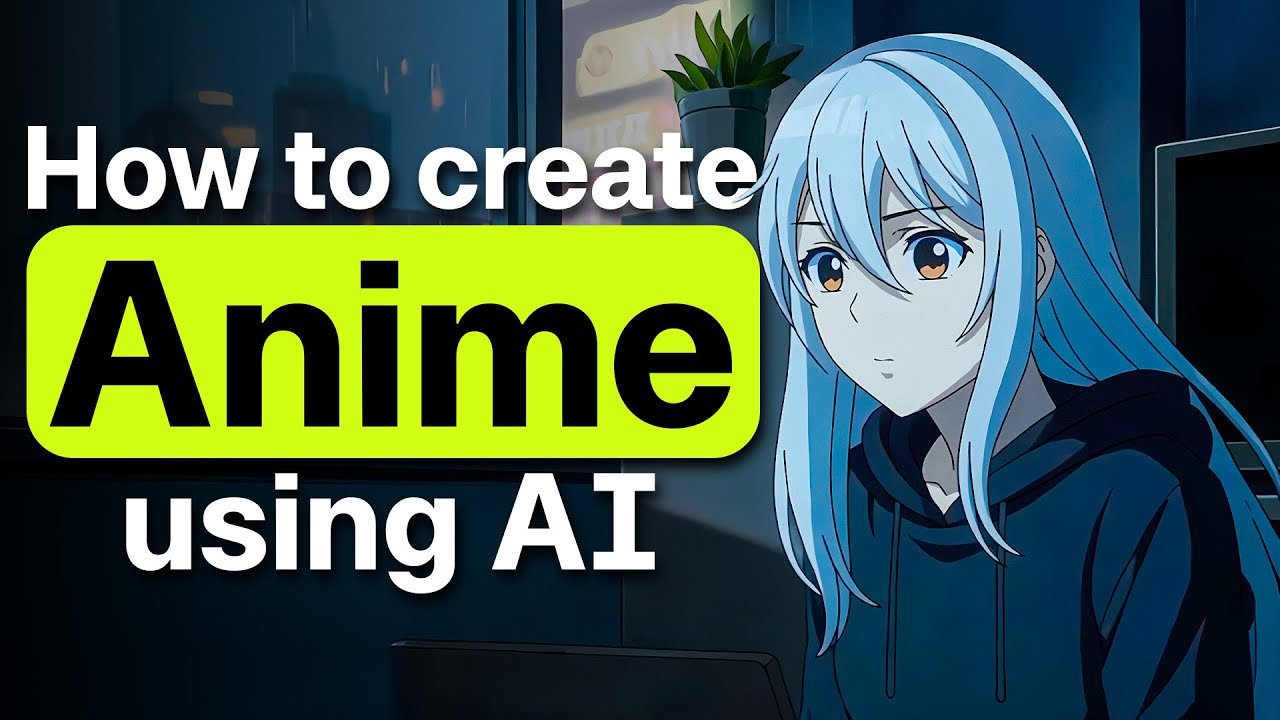
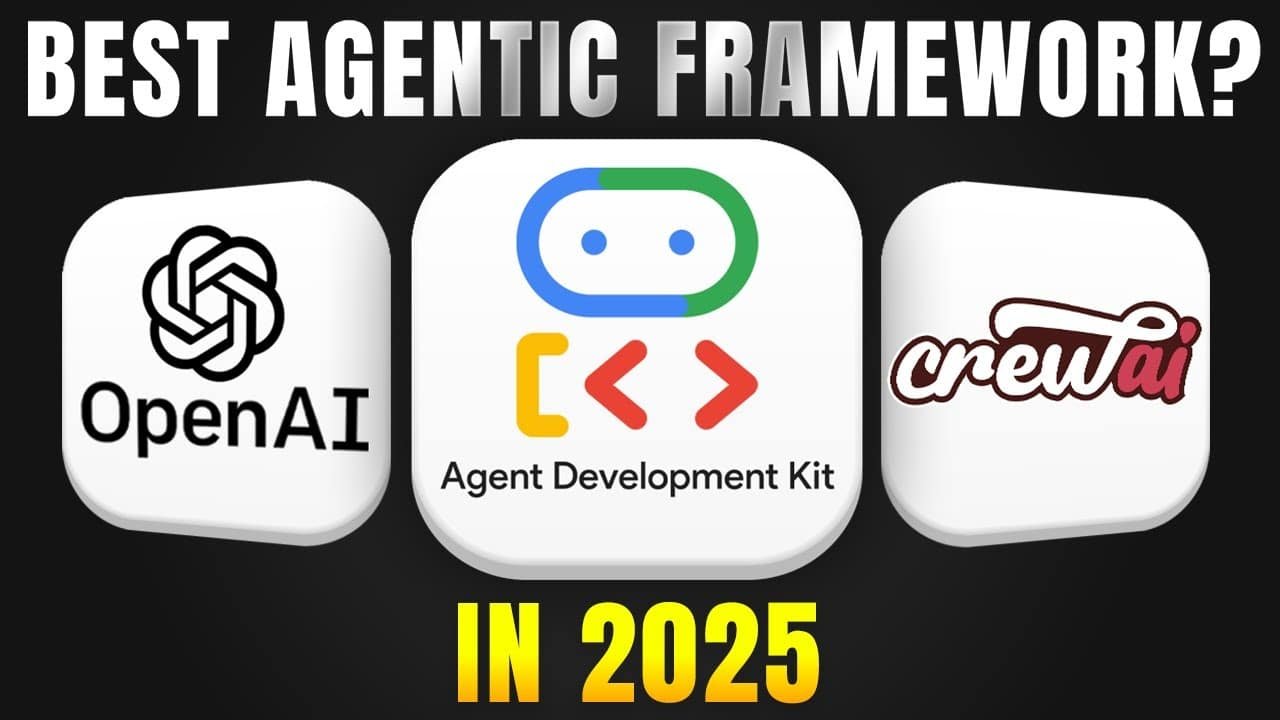
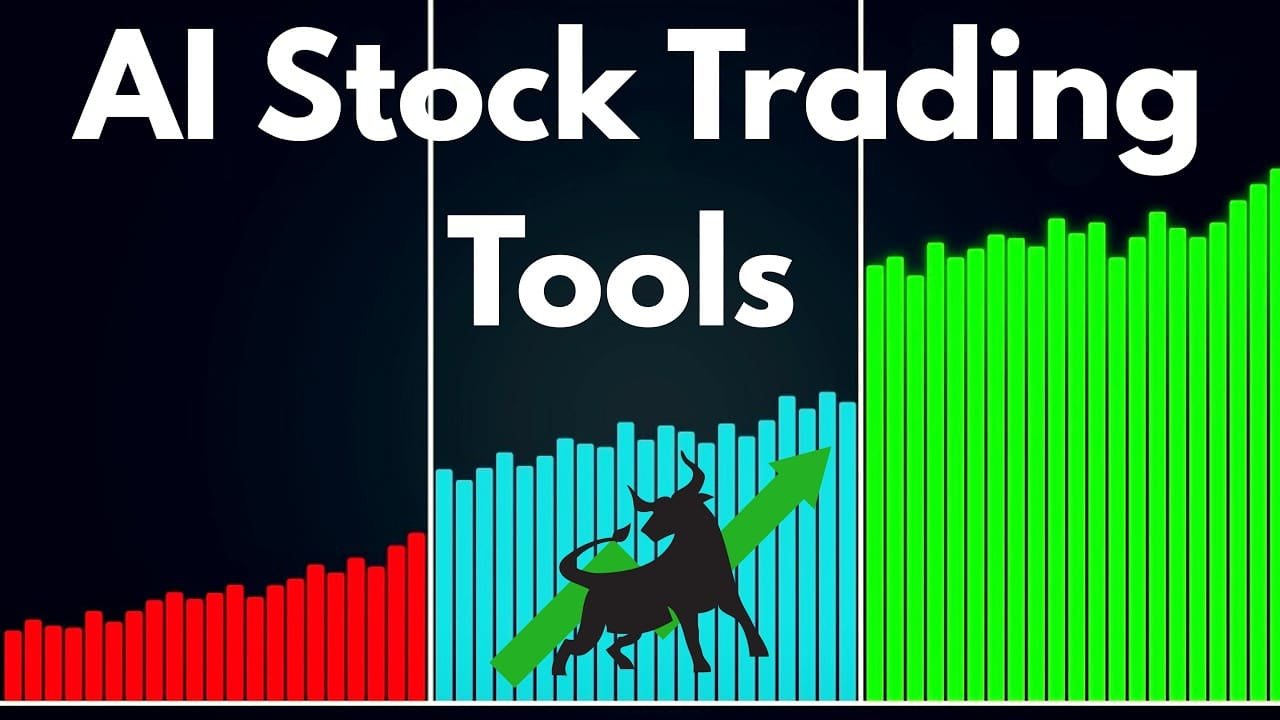

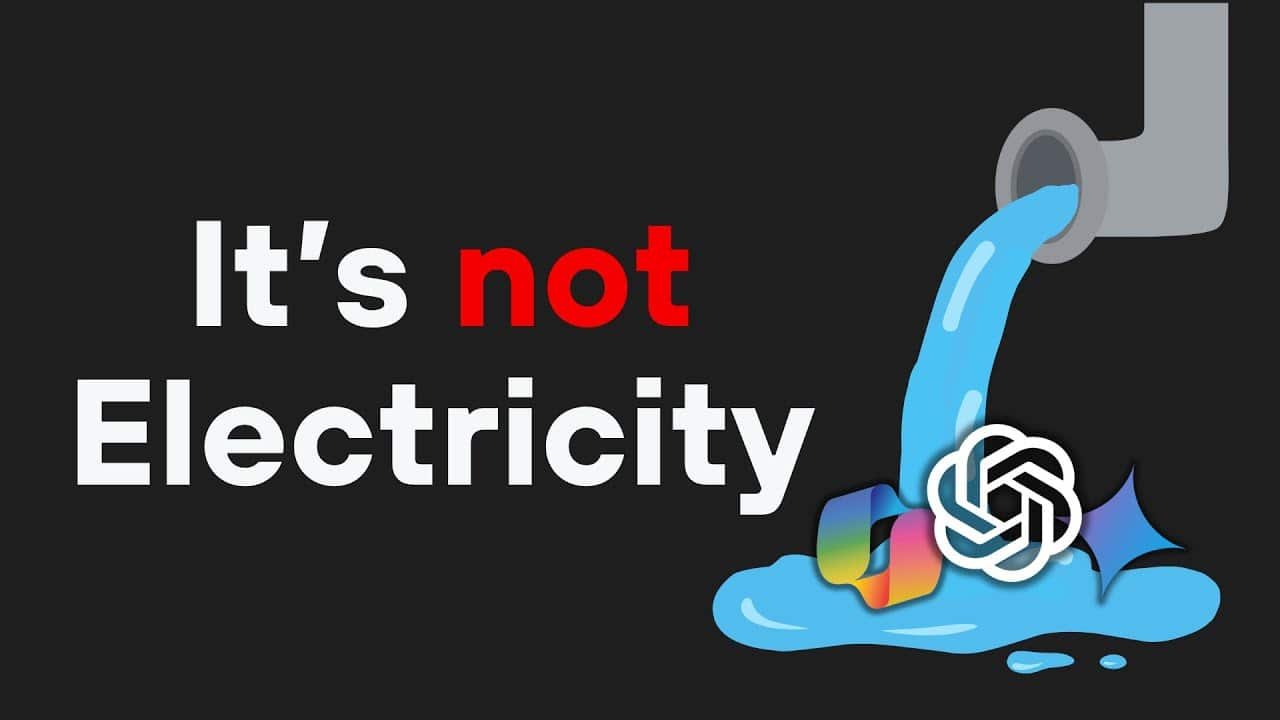
Hello, friend!
aiinsiderdaily.com, It’s clear you put real effort into your site—thank you.
I recently published my ebooks and training videos on
https://www.hotelreceptionisttraining.com/
They feel like a rare find for anyone interested in hospitality management and tourism. These ebooks and videos have already been welcomed and found very useful by students in Russia, the USA, France, the UK, Australia, Spain, and Vietnam—helping learners and professionals strengthen their real hotel reception skills. I believe visitors and readers here might also find them practical and inspiring.
Unlike many resources that stay only on theory, this ebook and training video set is closely connected to today’s hotel business. It comes with full step-by-step training videos that guide learners through real front desk guest service situations—showing exactly how to welcome, assist, and serve hotel guests in a professional way. That’s what makes these materials special: they combine academic knowledge with real practice.
With respect to the owners of aiinsiderdaily.com who keep this platform alive, I kindly ask to share this small contribution. For readers and visitors, these skills and interview tips can truly help anyone interested in becoming a hotel receptionist prepare with confidence and secure a good job at hotels and resorts worldwide. If found suitable, I’d be grateful for it to remain here so it can reach those who need it.
Why These Ebooks and Training Videos Are Special
They uniquely combine academic pathways such as a bachelor’s degree in hospitality management or a master’s degree in hospitality management with very practical guidance on the front desk agent description. They also cover the hotel front desk job description, and detailed hotel front desk tasks.
The materials go further by explaining the reservation systems in hotels, hotel check-in, check-out flow, guest service handling, and dealing with guest complaints—covering nearly every situation that arises in the daily business of a front office operation.
Beyond theory, my ebooks and training videos connect the academic side of resort management with the real-life practice of hotel front desk duties.
– For students and readers: they bridge classroom study with career preparation, showing how hotel management certificate programs link directly to front desk skills.
– For professionals and community visitors: they support career growth through questions for receptionist, with step-by-step questions to ask a receptionist in an interview. There’s also guidance on writing a strong receptionist job description for resume.
As someone who has taught resort management for nearly 30 years, I rarely see materials that balance the academic foundation with the day-to-day hotel front desk job requirements so effectively. This training not only teaches but also simulates real hotel reception challenges—making it as close to on-the-job learning as possible, while still providing structured guidance.
I hope the owners of aiinsiderdaily.com, and the readers/visitors of aiinsiderdaily.com, will support my ebooks and training videos so more people can access the information and gain the essential skills needed to become a professional hotel receptionist in any hotel or resort worldwide.
Thanks again for all the work you do here.
Hi there.
aiinsiderdaily.com, I appreciate the care you put into this space—it really shows.
I recently published my ebooks and training videos on
https://www.hotelreceptionisttraining.com/
They feel like a hidden gem for anyone interested in hospitality management and tourism. These ebooks and videos have already been welcomed and found very useful by students in Russia, the USA, France, the UK, Australia, Spain, and Vietnam—helping learners and professionals strengthen their real hotel reception skills. I believe visitors and readers here might also find them practical and inspiring.
Unlike many resources that stay only on theory, this ebook and training video set is closely connected to today’s hotel business. It comes with full step-by-step training videos that guide learners through real front desk guest service situations—showing exactly how to welcome, assist, and serve hotel guests in a professional way. That’s what makes these materials special: they combine academic knowledge with real practice.
With respect to the owners of aiinsiderdaily.com who keep this platform alive, I kindly ask to share this small contribution. For readers and visitors, these skills and interview tips can truly help anyone interested in becoming a hotel receptionist prepare with confidence and secure a good job at hotels and resorts worldwide. If found suitable, I’d be grateful for it to remain here so it can reach those who need it.
Why These Ebooks and Training Videos Are Special
They uniquely combine academic pathways such as a bachelor’s degree in hospitality management or a advanced hotel management course with very practical guidance on the hotel front desk job duties. They also cover the hotel front desk receptionist job description, and detailed hotel front desk tasks.
The materials go further by explaining the reservation systems in hotels, check-in and check-out procedures, guest relations, and practical guest service recovery—covering nearly every situation that arises in the daily business of hotel reception.
Beyond theory, my ebooks and training videos connect the academic side of resort management with the real-life practice of hotel front desk duties.
– For students and readers: they bridge classroom study with career preparation, showing how hotel management certificate programs link directly to front desk skills.
– For professionals and community visitors: they support career growth through interview tips for receptionist, with step-by-step interview questions for receptionist with answers. There’s also guidance on writing a strong receptionist description for resume.
As someone who has taught hotel and management courses for nearly 30 years, I rarely see materials that balance the academic foundation with the day-to-day job description of front desk receptionist in hotel so effectively. This training not only teaches but also simulates real hotel reception challenges—making it as close to on-the-job learning as possible, while still providing structured guidance.
I hope the owners of aiinsiderdaily.com, and the readers/visitors of aiinsiderdaily.com, will support my ebooks and training videos so more people can access the information and gain the essential skills needed to become a professional hotel receptionist in any hotel or resort worldwide.
Thanks again for all the work you do here.